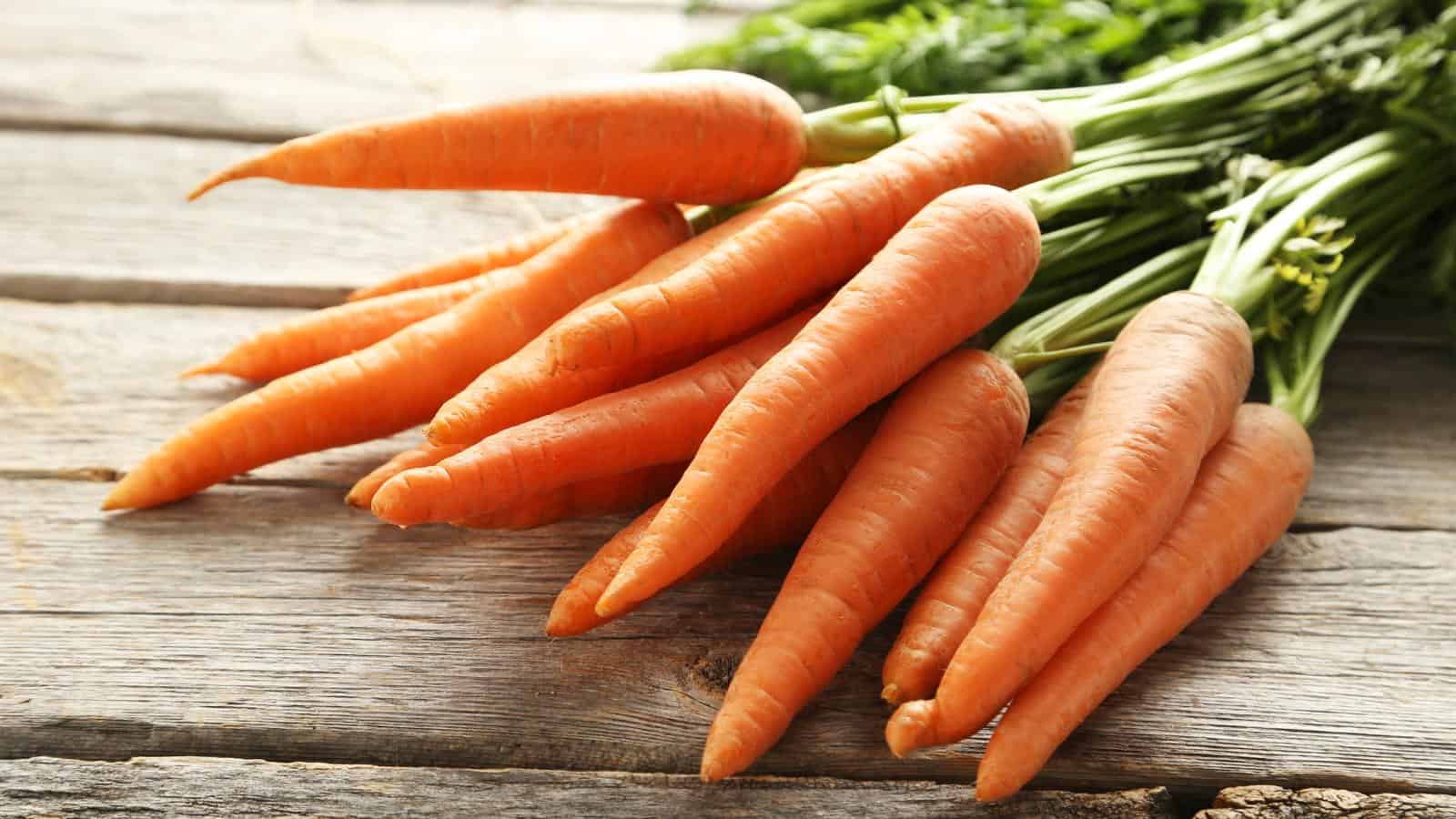In a perfect world, we’d all have the time to buy fresh fruits and vegetables daily, but for most, that’s neither practical nor convenient. Preserving produce effectively is essential for reducing waste, saving money, and retaining nutritional value. Here is a collection of tips to help you extend the shelf life of your fruits and vegetables, ensuring your groceries last longer and stay fresh.
Soak Berries in Vinegar

Strawberries, raspberries, and blueberries are some of the shortest-lived fruits, but you can extend their shelf life by rinsing them in a mild vinegar solution. Southern Living recommends soaking them in 1 part vinegar to 3 parts water for a few minutes before drying and storing them—the acidic vinegar helps kill mold spores and bacteria that speed up decay.
Store Apples Separately

Apples produce more ethylene than almost any other fruit, so storing them together with your other produce will significantly speed up ripening and decay. Instead, store them in a separate drawer or in a sealed plastic bag in your refrigerator to keep them from affecting the longevity of other nearby fruits and vegetables.
Keep Bananas on the Counter

Bananas don’t do well in fridges because they continue to ripen after being picked and can only ripen evenly at room temperature. If you want to slow down the ripening process, wrap the stems in plastic wrap, which helps contain the ethylene gas bananas produce there. Alternatively, they freeze well in cut chunks—ideal for smoothies.
Refrigerate Citrus Fruits

Citrus fruits last much longer when stored in a mesh bag in the refrigerator or the crisper drawer. This maintains their moisture levels—preventing them from becoming unappealingly dry—and minimizes their exposure to ethylene gas from other produce, which can cause their skins to develop soft spots.
Treat Herbs Like Flowers

As with other green leaves, fresh herbs like basil and rosemary don’t last long. You can extend their shelf life by treating them like fresh flowers; trim the ends and place them in a glass of sugar water before covering them loosely with a plastic bag and refrigerating them. Alternatively, use a specialized herb preservation kit designed to keep them fresh.
Store Mushrooms in a Paper Bag

A test undertaken by The Kitchn found the best way to store mushrooms was in a paper bag lined with extra paper towels that is then placed in the fridge. The primary factor impacting mushroom spoilage is moisture, so maximum absorption of liquid and aeration are key. Avoid plastic or ceramic containers, especially those that are sealed.
Keep Garlic and Onions in a Mesh Bag

If stored properly, garlic and onions have a relatively long shelf life—just ensure you place them in a cool, dark place with maximum air circulation. A mesh bag is a great way to ensure air can reach them, which greatly increases their longevity. Avoid using plastic bags or containers, which can trap moisture and cause them to spoil.
Wrap Celery in Aluminum Foil

Celery will stay crisp for several weeks, even after being cut, if you wrap it in aluminum foil and store it in the refrigerator. The foil allows the celery’s own ethylene gas to escape while keeping it moist, which is essential for preventing it from going limp.
Store Asparagus Like Cut Flowers

Like cut flowers, asparagus tips last the longest when the ends are trimmed diagonally and placed in a glass jar of water (around an inch should suffice). Unlike flowers, keep them in the fridge and cover the tops loosely with a plastic bag. This method keeps asparagus hydrated and fresh for extended periods.
Freeze What You Can’t Use

Sometimes, we just can’t eat all the fresh produce we have, but freezing is an excellent way to preserve its freshness and nutritional benefits, even if the texture may be forever changed! Blanch (lightly boil) vegetables before freezing to maintain their color and nutritional value. Fruits can be frozen whole or in pieces in plastic freezer bags and containers.
Use a Vegetable Brush

Cleaning root vegetables with a vegetable brush under cold water can remove dirt and bacteria that may cause them to spoil faster without removing their protective and nutritious skins. The Produce Nerd advises drying them thoroughly before storing them to prevent excess moisture from causing premature rot.
Invest in a Produce Saver

Produce-saver containers keep fruits and vegetables fresh for longer by regulating the flow of gasses like oxygen and carbon dioxide while maintaining optimal moisture levels. The initial investment will be well worth it, as these reusable containers significantly extend the shelf life of your produce and prevent spoilage, ultimately saving you money.
Regulate Crisper Drawer Humidity

Most modern refrigerators come with crisper drawers that have adjustable humidity settings. Use these to your advantage by changing the humidity level based on what you’re storing. High humidity is ideal for leafy greens and vegetables that wilt easily, while low humidity is better for fruits and vegetables prone to rotting.
Store Fruits and Vegetables Separately

Knowable Magazine explains that fruits produce ethylene gas as they ripen, which can prematurely ripen or spoil surrounding veggies. Store your fruits and vegetables separately, in separate drawers or areas of the fridge. This will ensure they aren’t adversely affected by the gasses produced by other fresh items.
Use Produce Bags

Specially designed bags that regulate moisture and airflow can significantly extend the life of your fruits and vegetables by helping to maintain the right humidity level, reducing the risk of spoilage, and keeping produce fresh. Plus, Veggie Saver reports they help the environment by reducing plastic waste.
Store Root Vegetables in a Cool, Dark Place

Potatoes, carrots, onions, and similar root veggies last longer when stored in a cool, dark, and well-ventilated area, like a root cellar or a dark cabinet in a cool part of your kitchen. The refrigerator is too cold and moist for such produce, and storing them there may alter their texture and flavor or speed up external signs of rot.
Use Paper Towels

Single-use kitchen roll is an excellent way to hygienically absorb excess moisture, especially for leafy greens that wilt quickly in high humidity. Wrapping them carefully in a clean paper towel before storing them in the refrigerator will absorb excess moisture, keeping them fresh and crispy for much longer. Just remember to change the towel once it’s damp.
Revive Wilted Vegetables with Ice Water

If all else fails and your leafy greens or carrots have started to wilt or soften, you can revive them by soaking them in ice water for a few minutes. This can rehydrate their cells and bring back some of their lost crispness. Try doing this before using them or periodically to help them last longer.
Practice First In, First Out (FIFO)

Organize your refrigerator and pantry using the FIFO method—the first thing you put in is the first thing you take out. Avoid leaving older purchases to rot while indulging in the freshest, most newly purchased produce by always placing the newest food behind older items. This helps reduce waste and prevents older produce from being forgotten and eventually spoiling.

